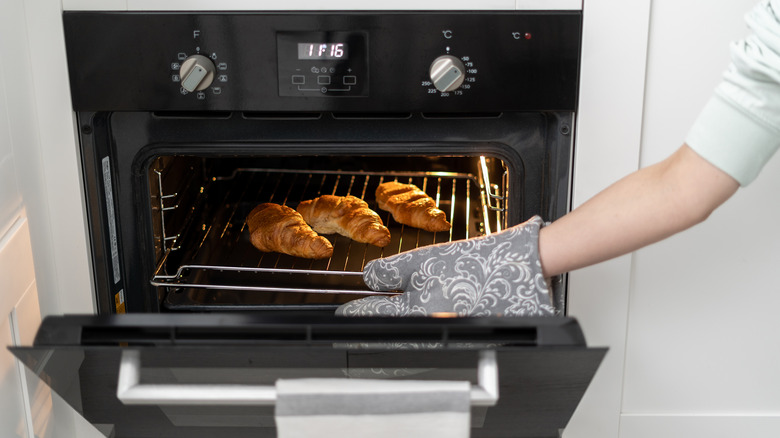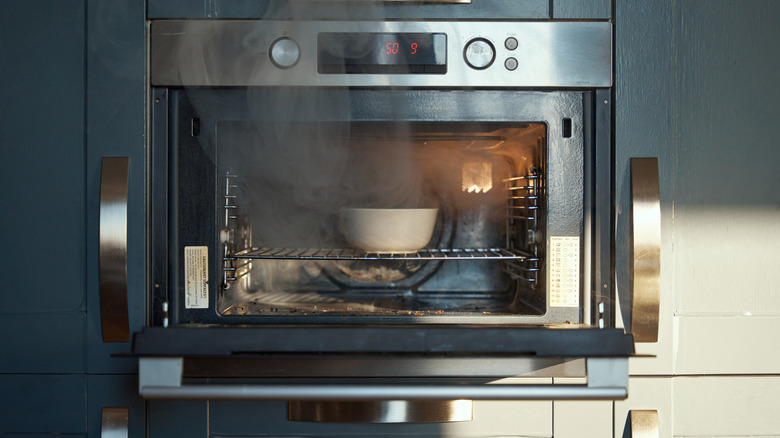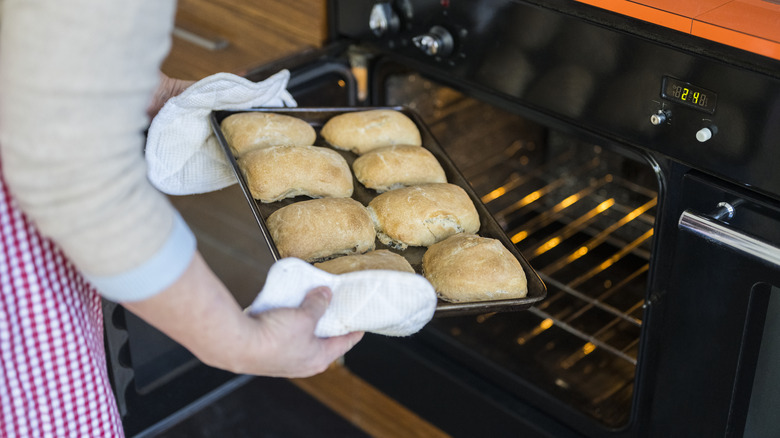Why It Is A Mistake To Ignore Your Recipe's Suggested Oven Rack Position
It goes without saying that precision is important in various aspects of the baking process, like when it comes to the measurements of ingredients, the oven temperature, and baking time. But many people forget that the position of your oven rack also makes a big difference. Placing your pan on the bottom rack when it should really be placed on the top may not produce the intended outcome or best results.
The reason this happens is because oven heat isn't uniform. Some ovens generate heat solely from a single heating element located at the bottom of the oven, but most of them have two, one at the bottom and one at the top. You may think the ones with top and bottom heat sources yield even heat, but heat rises, and that means the top rack of the oven will always be the hottest. Some recipes benefit from being placed on the hottest rack in the oven, while for others it could lead to undesirable outcomes. This is why it's so important to follow your recipe's suggested oven rack position.
What happens when you bake your food on the wrong oven rack
The closer your food is to the heat source, the faster it'll brown. If you were to put cookies on the top rack of the oven, for example, the tops would brown faster than the bottoms. As a result, by the time the bottoms finish baking, the tops would be overcooked. For something like a homemade pizza, on the other hand, this placement may be more beneficial because it'll result in a crispier crust and caramelized toppings. The center rack is considered the best place to bake a cake for even heat distribution.
Going against your recipe's recommended oven rack position doesn't necessarily mean it won't cook properly, but it'll definitely affect its texture. Maybe the skin of the chicken you're roasting won't be as browned, or your potatoes will turn out soft instead of crispy. If your recipe doesn't specify, think of the middle rack as the default position since the food will be equidistant from both the top and bottom heating elements. This promotes more uniform cooking from all sides and yields a consistent texture throughout the dish.
How to determine which oven rack to bake your food on
Though opting for the middle rack is fine for the majority of recipes, it isn't always the most ideal. It's best to use the top rack for dishes that benefit from a crispy top, such as casseroles or gratins, or dishes topped with cheese like this Crispy Cheesy Broccoli Gratin. Reserve use of the bottom rack for recipes that require more prolonged cooking, like roasts or breads. This position ensures a well-cooked interior without excessive browning on the top. Additionally, it helps prevent the bottoms of pies or quiches from becoming soggy by allowing the crust to crisp up properly.
So what if you're preparing multiple dishes or batches and want to put everything in the oven at the same time? The best approach in this case is to place one dish in the top third of the oven and the other in the bottom third and try to position them so that no dish is directly above or below the other. It also helps to rotate and switch the dishes over halfway through baking so that they receive equal heat. Ultimately, the goal is to place food in a position that allows for optimal heat distribution, resulting in ideal texture and thorough cooking.


